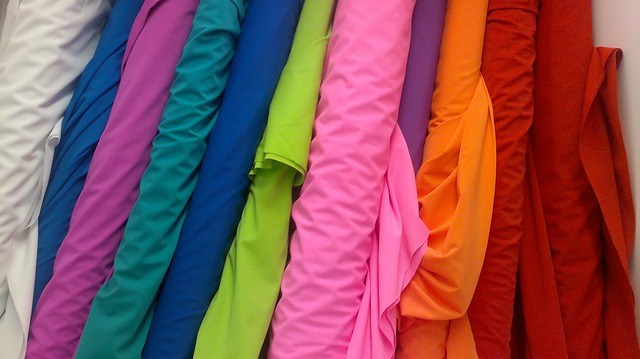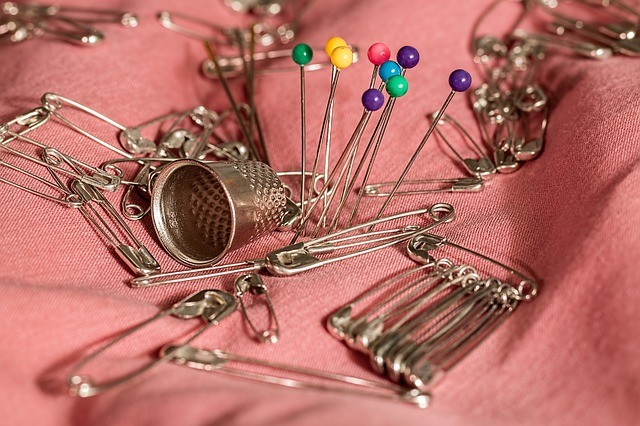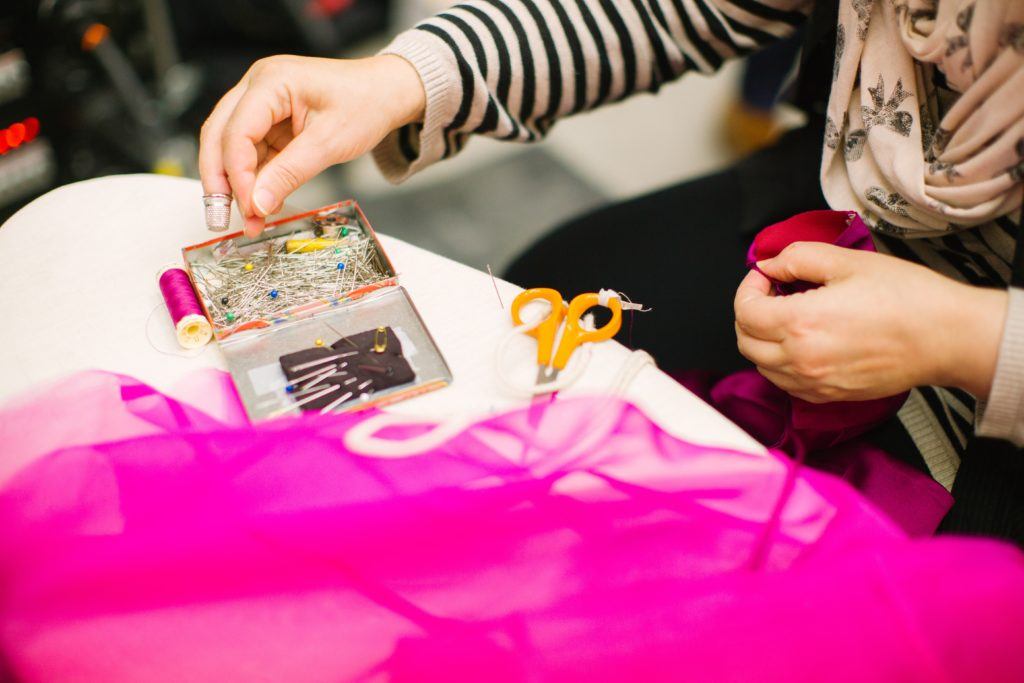Spandex: that magical fabric that moves with you and allows your waistband to stretch a couple more inches when you eat extra cookies.
While spandex is wonderful in our clothes, sewing spandex can be a little difficult.

It can raise some issues like puckering and bunching up when run through the sewing machine. But, with the right tools and some simple techniques, you can be sewing your next spandex creation (whether that be a swimsuit, a workout outfit, or a superhero costume) in no time.
How To Sew Spandex
Choose the Right Needle
While there are needles that are universal to all kinds of fabrics that can be used on spandex, there are also needles specifically designed for stretchy fabrics.
These types of needles have ballpoint ends, so if you need to buy a new needle be sure that you look for ones with this feature.
The ballpoint helps stop the fabric from tearing and is designed to not drop stitches, which we’d recommend if you are sewing spandex or similar materials (like a scuba fabric dress).
We are trying to make this process easier, and if buying a needle is what’s going to make sewing that leotard or swimsuit for your daughter easier, why not spend the extra few bucks?
Test Your Stitches Beforehand
Make sure to test your stitches on any new fabric you are using. You might want to get a few more inches from the fabric store just for this purpose.
Practice on the fabric to make sure you are not going to have any unexpected issues. Test it in different directions as well.
The stitches might work or look differently based on whether your sewing with or across the grain of the fabric.
Pins!
Of course you are going to pin your fabric together to help things go more smoothly, but with a stretchy fabric like spandex, you want to ensure your pins are even more secure than usual.
You may even want to do some quick baste stitching (a few stitches by hand) to hold the fabric in place. It could save you a lot of frustration and time, and if this is your first try with spandex, we want this process to go as problem-free as possible.
Also, if your sewing machine allows you to change the amount of pressure the pressure foot applies on the fabric, try decreasing the pressure.
Decreasing the pressure will make it less likely that your fabric stretches unnecessarily and will prevent puckering (the worst!).

What Stitch To Use When Sewing Spandex
The stitch you use needs to stretch with the fabric, otherwise you will be popping threads left and right when putting on the garment.
Here are a few stretchy stitches that you can add to your repertoire:
Zigzag
This stitch is on many basic home sewing machines, and if it is your only option, use it.
If you have a choice, don’t. It can leave gaps between stitches, can pull on tighter garments, tends to pucker, and is not the strongest stitch out there, so it is not our best option.
Overcasting (Knit) Stitch
This stitch allows for an unbroken seam line and is a wide stitch that allows you to finish off the edge of the fabric.
It also allows the fabric to lay flat and stretch (and that’s what we’re looking for after all).
The only drawback to this stitch: it is not the easiest to rip out if you make a mistake.
Triple (Straight Stretch) Stitch
This stitch may look like a regular old stitch to you, but, actually, each stitch is sewn three times, allowing for maximum strength as well as providing more stretch. And guess what? No puckering!
This is also a great stitch for seams that need to look clean or that will ultimately be pressed (ironed) open.
However, as you can probably guess, it is very difficult to take this stitch out once you’ve used it.
Triple Zigzag (Tricot) Stitch
This stitch is both stronger and stretchier than its brethren, the zigzag. But, while it is good for topstitching, it is not the best for seams, as there are still gaps.
It is usually used on elastic and you might have noticed it on your underwear.
How To Sew Spandex Using Attachments
Now, let’s talk about a possible attachment you can get for your home sewing machine.
These are optional, but will guarantee no puckering of the fabric.

Walking Foot Attachment
This attachment has (you guessed it!) “walking teeth” that mimic the movement of the lower feeds on your sewing machine.
We want the fabric to move more quickly through the feed to avoid the dreaded puckering.
Mainly, this attachment helps move the fabric through the machine quicker and creates more even stitching.
This is most helpful when working with fabrics that can be sticky (think leather or pleather) or when topstitching.
As with anything you are adding to your sewing machine, check the manual that came with it to ensure your machine has the ability to add attachments.
Let’s Sew
You will want to guide the fabric through your machine while stretching it slightly.
This doesn’t mean to stretch it as far as it can go like a rubber band. Just stretch it a little to help prevent our archenemy… puckering!
Stretching is not the same as pulling. Pulling the fabric through the machine may cause your fabric to tear and you run the risk of stitches being dropped.
Hold the fabric in front of and behind the needle, and feed it through your machine as you normally would. You should be fine!
Here’s a video showing how to sew spandex to make a bikini.
That’s it. See, sewing spandex isn’t as hard as you thought.
With the information you learned today, you will be sporting a new swimsuit, a unique workout outfit, or your next Catwoman costume in no time.
Do you have any tips on how to sew spandex?
